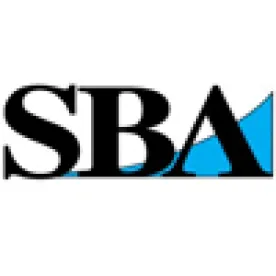Go-To Guide: |
|
The Small Business Administration (SBA) recently suspended new applications to the 8(a) BD Program in response to a federal district court injunction. The 8(a) BD Program is a nine-year program created to help firms owned and controlled by socially and economically disadvantaged individuals. For details on the suspension, see our Aug. 8 GT Alert. As to current participants in the 8(a) BD Program whose eligibility is based on one or more individuals that rely on the presumption of social disadvantage in one of a list of identified groups, the SBA has requested new social disadvantage narratives. Prior to award of a new 8(a) contract, the participant’s owner(s) must demonstrate personal social disadvantage through the narrative/evidence process. In such a case, the SBA may issue an approval letter indicating the participant has established social disadvantage and may continue to receive 8(a) contracts and otherwise participate in the 8(a) BD Program. However, options and contract modifications can still be exercised without a social narrative.
In light of these significant developments, the SBA hosted a public webinar and published guidance to current 8(a) BD participants on how to properly draft a social disadvantage narrative. A social narrative must establish that the discrimination or bias experienced by an individual is chronic, substantial, and has occurred within American society—not in another country. Additionally, such discrimination must have negatively impacted the individual’s entry or advancement in the business world. The SBA detailed three elements to its review of social disadvantage narratives: (1) whether each supporting claim establishes an incident of bias that could lead to a finding of social disadvantage; (2) whether each incident of bias negatively impacted the individual’s entry into or advancement in the business world; and (3) whether, in the totality, these qualifying incidents establish chronic and substantial social disadvantage. We highlight the following specific takeaways from the SBA’s recent guidance.
Key Takeaways for 8(a) BD Participants
Identity/Characteristics. Participants must clearly describe which identity or characteristics they possess and how they have been subject to discrimination for eligibility in the 8(a) BD Program. Race, religion, ethnic origin, gender, sexual orientation, identifiable disability, and isolation from American society are typical identities/categories that have formed the basis for successful social disadvantage narratives. One identity/characteristic is sufficient to establish social disadvantage. Participants with multiple identities/characteristics can claim more than one but should be careful to identify which characteristic is the subject of discrimination.
Description of Incident(s). The SBA encourages participants to provide two incidents of bias to establish chronic and substantial social disadvantage, though one may be enough if it is pervasive and recurring. The SBA also recommends limiting the narrative to two examples to avoid unnecessary delays to the review process. Further, experience(s) should be related to one of the following categories:
- Education. The SBA considers factors such as denial of equal access to higher education; exclusion from social/professional education associations; denial of earned education honors; and social patterns or pressures that discourage the individual from pursuing a professional or business education.
- Employment. The SBA considers factors such as unequal treatment in hiring, promotion, and other aspects of professional advancement; terms and conditions of employment; retaliatory or discriminatory behavior by an employer; and social patterns or pressures that discourage the individual from a professional or business field.
- Business History. The SBA considers factors such as unequal access to credit or capital; acquisition of credit or capital under commercially unfavorable circumstances; unequal treatment in opportunities for government contracts or other work; unequal treatment by potential customers and business associates; and exclusion from business or professional organizations.
For each incident, the SBA asks participants to describe the following: (1) when the incident occurred; (2) where the incident occurred; (3) who committed the discriminatory action; (4) what took place; (5) why the conduct was more likely motivated by bias or discrimination; and (6) how each instance impacted one of the categories detailed above. The SBA published a full list of examples that would satisfy/not satisfy this standard.





 />i
/>i
